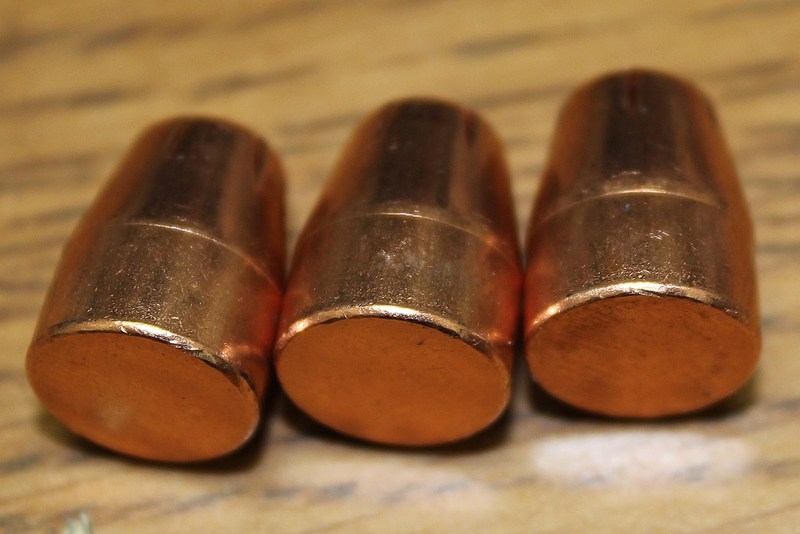I've been reloading centerfire rifle for years but just started loading for hand guns . This question started out regarding crimping lead bullets and how much is needed . It now has moved to a general question to any bullet style . I started doing some test with different crimp strengths to see what holds the bullet best .
I was using the 45acp 200gr XTP bullet in the test . First I'll ask which of these bullets do you think has the right crimp ?
Ok now that we have a base line to work with . I seated a bullet and gave it a medium crimp . Likely something like the center bullet above . I then placed it in a mag and chambered it by releasing the slide on a Springfield 1911 and letting the slide fly home . I got .005 in bullet set back and was surprised at that . I really did not think I'd get any .
Now I have a couple threads going about 45acp reloading and this crimp thing has come up and I have received some good info . Some say my flare was to much and others feel it may be my COAL . . I thought I start a fresh thread dedicated to this point .
Now that I know I was getting bullet set back with my current method of flaring , seating & crimping I thought I'd try a couple more test all still using the same 200grXTP bullets ( each new test with new case and bullet ) and Springfield 1911 .
First I re-sized some cases then adjusted the flare to just barely give enough to seat the bullet with out shaving copper off . I then seated the bullet to my COAL of 1.240 and gave it a medium crimp . I then did the chambering test and the bullet set back .007 .
Ok no problem I do all that agian with new case and bullet but this time I crimp it as much as my die will crimp, VERY VERY heavy crimp ( way more then the bullet on the right in pic ). I then do the chambering test . I get bullet set back of .006 . I chamber it 4 more times in a row for a total set back of .037 . Now this is measuring with my .400 comparator not the tip of the bullet .
OK no problem lets see if it's my seating depth so I do all the sizing , flaring etc but seat the bullet to Hornady's per manual 1.210 . I then give the cartridge a medium heavy crimp . I then chamber test the round . Any guesses what happen -------------- yep got a set back of .007 . So I chambered that round another 4 times for a total set back of .031 .
Either I'm doing something very wrong or set back is a normal thing . Now everything I've read about crimping says you crimp to
AVOID set back . I don't ever remember reading anything that said you crimp to
keep set back to a MINIMUM .
Is this just something you can't stop with out a crimp groove ?
How many of you get set back and are ok with it and how many have actually tested for bullet set back ?


